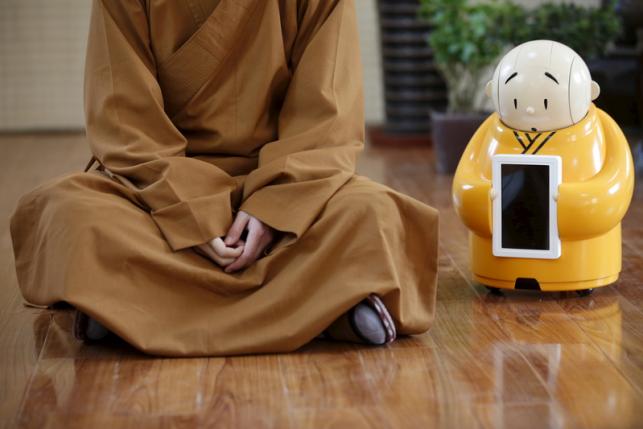

Following the publication of the Nairobi-Cairo Proposals: Renewing the Instruments of the Anglican Communion last December by the Inter-Anglican Standing Commission on Unity, Faith and Order (IASCUFO), Anglicans are discussing the possibility of moving toward a polycentric model, highlighting “the growing influence of the global South in the Communion,” with the Church of England “less central to its common life.” The Nairobi-Cairo Proposals aim to renew the Anglican Communion by redefining its membership and restructuring its Instruments of Communion to foster a more decentralized, inclusive, and collaborative fellowship that accommodates theological diversity while maintaining historic ties to the See of Canterbury. The proposals will be on the agenda of the next meeting of the Anglican Consultative Council in Belfast in June 2026. Acknowledging fractures within the Communion and attempting at the same time to save it, the new model would no longer describe the 42 churches of the Anglican Communion as being “in communion with the see of Canterbury” but would stress their shared inheritance and “historic connection” with Canterbury, while the churches of the Communion would “seek independently to foster the highest degree of communion possible one with another.”
Decentralized leadership would be stressed by the fact that the Archbishop of Canterbury would no longer automatically convene and chair all meetings of the Instruments, and leadership roles could rotate among international figures, reflecting the global diversity of the Communion. The document positions the Communion as an aspirational fellowship seeking “the highest degree of communion possible.” The debate is ongoing. Insofar as it is possible to summarize responses from various quarters of the Anglican Communion at this point, the reception is obviously a diverse one. On the conservative side, while seeing merits in a rotating leadership, the chairman of the Primates Council of the Global Fellowship of Confessing Anglicans (Gafcon), Archbishop Laurent Mbanda (Rwanda), does not see promises of renewal, but rather a path to potential doctrinal dilution. From the liberal and progressive camp, the plan’s flexibility is welcomed. The emphasis on autonomy and a less Canterbury-centric structure aligns with their push for local expressions of faith. From moderates, reactions seem to be rather positive. Some comments also appear to reflect institutional optimism about adapting the Communion to modern realities. The proposals for a reimagined Anglican Communion are broadly seen as a pragmatic attempt to hold the Communion together, but their reception is polarized. (Source: Church Times, February 14, December 6, 2024; the Nairobi-Cairo Proposals,
https://www.anglicancommunion.org/ecumenism/iascufo/the-nairobi-cairo-proposals.aspx)
 Buddhist monks in the Himalayan Kingdom of Bhutan have started testing BuddhaBot Plus, an AI tool originally developed in Japan and offering life advice grounded in Buddhism to address declining youth interest in the religion. BuddhaBot Plus is an upgraded version of the original BuddhaBot, which was created in 2021 using Japanese translations of Buddhist texts. The tool was created at Kyoto University under the guidance of religious studies scholar Seiji Kumagai, who was looking for ways of sharing the teachings of Buddhist philosophy with youth or lonely people who visit temples less frequently. In Japan, hundreds of temples close every year due to a lack of worshipers and income. Forecasts show that by 2040, a third of the country’s 80,000 temples will have closed. More surprisingly, Bhutanese monks felt that AI could also prove useful in their mountainous country, where 83 percent of the population identifies as Buddhist. An English version was developed at their request.
Buddhist monks in the Himalayan Kingdom of Bhutan have started testing BuddhaBot Plus, an AI tool originally developed in Japan and offering life advice grounded in Buddhism to address declining youth interest in the religion. BuddhaBot Plus is an upgraded version of the original BuddhaBot, which was created in 2021 using Japanese translations of Buddhist texts. The tool was created at Kyoto University under the guidance of religious studies scholar Seiji Kumagai, who was looking for ways of sharing the teachings of Buddhist philosophy with youth or lonely people who visit temples less frequently. In Japan, hundreds of temples close every year due to a lack of worshipers and income. Forecasts show that by 2040, a third of the country’s 80,000 temples will have closed. More surprisingly, Bhutanese monks felt that AI could also prove useful in their mountainous country, where 83 percent of the population identifies as Buddhist. An English version was developed at their request.
Over the next three years, a few hundred monks and nuns of the Zhung Dratshang, Bhutan’s Central Monastic Body, will have access to BuddhaBot Plus, according to journalist Craig C. Lewis. The purpose is not only to see how it works and to test its accuracy but also to adjust it to the local environment and possibly enrich it with contents of the monastics’ own. If successful, BuddhaBot Plus will gradually be promoted to a wider audience, with the full rollout expected by 2027. Due to its use of English, it may even be offered to an international audience, but it is possible that a fee will be charged as it expands. BuddhaBot Plus offers a modern approach to accessing and interacting with Buddhist teachings. However, according to remarks made by Kumagai, the potential impact goes beyond religious education, “since AI-generated interpretations of Buddhist thought could introduce new philosophical perspectives.” (Source: France Info, February 5; Asia News, February 14; Buddhistdoor Global, February 17; DSA, February 3)